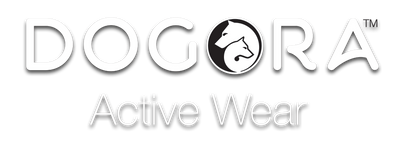Listen to The Tail

You don’t have to be a dog whisperer to know that a wagging tail is a sign of affection and happiness, however, this is not always the case. There is a general misconception that a wagging tail always equals a friendly and happy dog. A wagging tail can illustrate a lot about a dog’s feelings and, as a dog owner, it’s important to also know about tail positions.
Dogs will be dogs and wiggle/wag their tails. Their furry/boney tail serves as much more than just a whip and table sweeper. The original purpose of a tail is to maintain balance and provide guidance when making sharp turns while running and swimming. Tails also help dogs maintain their balance when walking, climbing and leaping around narrow structures. Over time, through social and physical evolution, a dog’s tail has adapted to play a vital role in communication with other dogs, humans and other animals.
Your dog’s tail is a good indication of his or her mood. Many of their movements and meanings are the same, although tail movement isn’t identical from dog to dog.
High or Low Wag
A good rule of thumb is when a dog’s tail wag is held high, it’s a warm, confident, and inviting wag. On the other hand, a slow wag can mean the dog is nervous, timid, or concerned about the situation. A tucked tail reveals fear, submission and anxiety which sometimes can lead to aggression. While a tail held up and straight can mean something has piqued your dog’s interest such as a squirrel, or other dog.
Fast or Slow Wag
A faster wagging tail is generally associated with cheerfulness, while its counterpart -- a slow wag -- can be interpreted as anxiety or aggression. A slow wag can also become faster with confidence and comfort in certain situations.
Left vs. Right Side Wag
Numerous studies claim that right-sided tail wags represent happiness and excitement, while left-sided tail movements are characterized by nervous or unhappy feelings.
According to Live Science, in 2007, researchers discovered that the way a dog wags its tail also gives clues about what it's feeling. Specifically, a tail wagging to the right indicates positive emotions, and a tail wagging to the left indicates negative emotions.
This phenomenon has to do with the fact that the mammalian brain's left hemisphere controls the right side of the body and vice versa.
Research on the approach-avoidance behavior of other animals has shown that the left hemisphere of the brain is associated with positive-approach feelings, while the right hemisphere is associated with negative-avoidance feelings.
Further, a 2013 study found that dogs understand the asymmetric tail wagging of other dogs. A right-wagging tail relaxes other canines, while a left-wagging tail makes them feel stressed.
The Booty Wiggle
Finally, we have all seen our dogs overjoyed to see us after our long day at work, camp, training, or vacation. This uncontrollable, thrilled feeling your companion gets is him or her expressing the meaning of Love, while telling you they missed you.
If you enjoyed this post and found it informative, please feel free to share it with your friends and follow us on social media.
Nicholas Mozas is Founder and CEO of DOGORA. He is a graduate of the University of Guelph in Biological Science and holds an M.Sc. in Neutragenomics. Nicholas managed an Animal Hospital after graduation, gaining a better understanding of pets’ and owners’ needs. Find out more at www.dogora.ca

